Cyberpunk Use Cases
This is a password-protected draft of the first of two presentations by Rudy Rucker.
1.Talk: “Cyberpunk Use Cases”
2. Workshop: “Lifebox for Telepathy and Immortality”
The presentations are to be delivered at the IOHK Summit in Miami Beach, Florida, April 18, 2019.
This draft of “Cyberpunk Use Cases” was last updated on March 28, 2019.
Talk length, 30 mins.
Workshop length, 40 mins.
Slides consist of the images, bullet-lists, and tables from these pages.
Pages go public on April 16, 2019.
Cyberpunk Use Cases
Where I’m From
I grew up in Louisville, Kentucky during the 1950s and 60s. I read a lot of science fiction. And I was fascinated by the Beat writers Jack Kerouac and William Burroughs.
In 1963, I left Louisville, and went to Swarthmore College near Philadelphia. I wanted to be a writer, but I majored in Mathematics. I didn’t like the English Lit classes. I figured I’d learn to write on my own.
After Swarthmore, I married my college girlfriend, Sylvia. We went to grad school at Rutgers in New Jersey, and I got a Ph. D. in mathematical logic. I went on to have a fairly good career as a writer. I’ve published about forty books. I’ve written popular science books about infinity, about the fourth dimension, and and about the nature of computation. Many of my books are science fiction novels. We’re talking high-class literary science fiction.
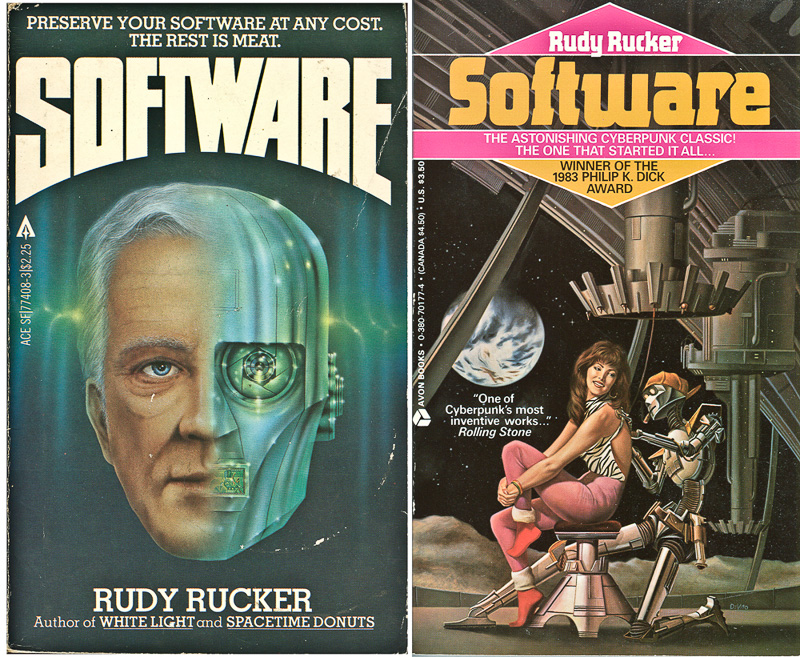
My best-known novel is Software, written in 1980. It was one of the earliest cyberpunk novels. The idea behind Software seems simple now.
- It should be possible to extract the patterns stored in a person’s brain,
and transfer these onto a computer or a robot.
You’ve seen this scenario hundred movies and TV shows, right? But I was the first one to write about it. In 1980, “soul as software” was an unheard of thought. Hardly anyone even knew the word “software.”
To make my Software especially punk, I made the brain-to-software transfer very gnarly. A gang of scary-funny hillbillies extracted people’s mental software by slicing off the tops of their skulls and eating their brains with cheap steel spoons. One of the hillbillies was a robot in disguise, and his stomach analyzed the brain tissue. Did I mention that I grew up in Kentucky?
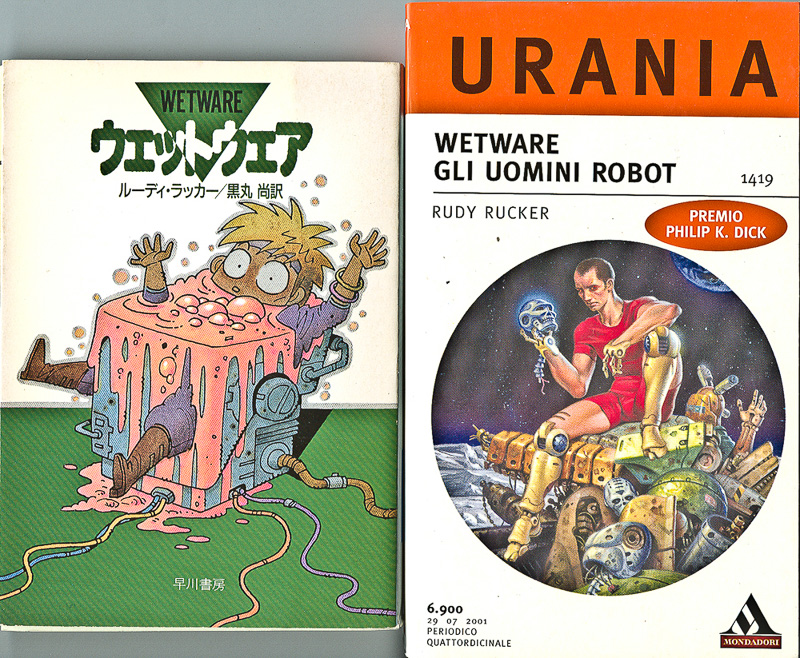
I went on to write three sequels: Software, Wetware, Freeware, and Realware. They’re collected in my Ware Tetralogy. And you can read my Complete Stories for free online. Read one of my stories before you go to sleep tonight. You’ll have interesting dreams.
In grad school I was a hippie, in the Eighties I was a punk, and after that I settled down to being a cyberpunk. Even so, I’m a reliable family man, with three children, and five grandchildren.
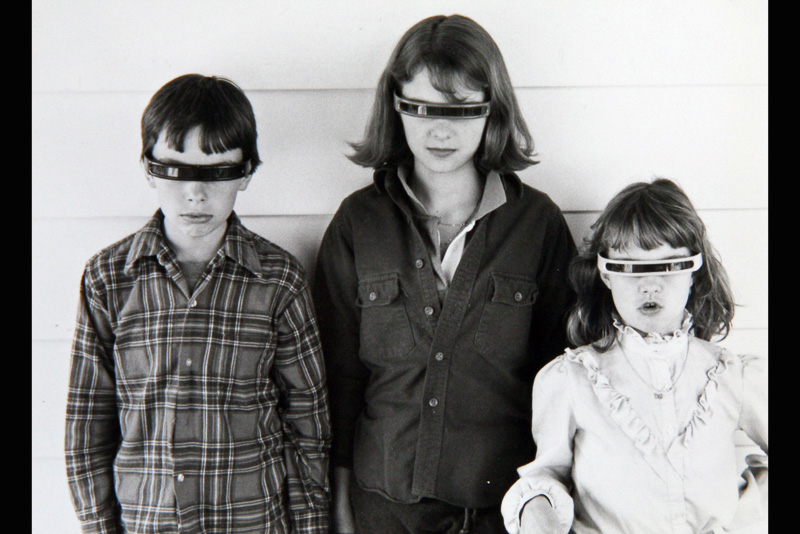
A photo of my cyberpunk children!
Being a respected writer doesn’t necessarily pay very well, so for most of my life I had a day job. I was a math professor until I was forty, and then we moved to California, and I became a computer science professor at San Jose State, in Silicon Valley.
I let the chip into my heart. At first I was faking it as a CS prof, but eventually I knew what I was doing, and I did some work as a software engineer at Autodesk. I published a book on software engineering for videogames. And I published several programs involving cellular automata, chaos, videogames, and artificial life.
And now here I am speaking at conference on blockchain. What am I going to say? Well, I’ll spin out some fantasies about things we might see in future. Weird, insane, cyberpunk use cases.
Cyber
Cyberpunk is about computers merging into our reality And it’s about maintaining our individuality in the face of that. As a writer, it was it was a lucky break that I ended up working in Silicon Valley. It’s like—what if William Blake had gone to work amid the “dark satanic looms” of a textile mill?
Cyberpunk explores the boundaries between humans, daily life, and computers.
Cyberpunk = Cyber + Punk.
Cyber is about the real world blending with the computer world.
Punk is about maintaining our independence and our attitude.
Cyber encompasses three trends.
- Software → People. Programs imitate us.
- People → Software. We behave like robots.
- Software ↔ Reality. The cloud merges with daily life.
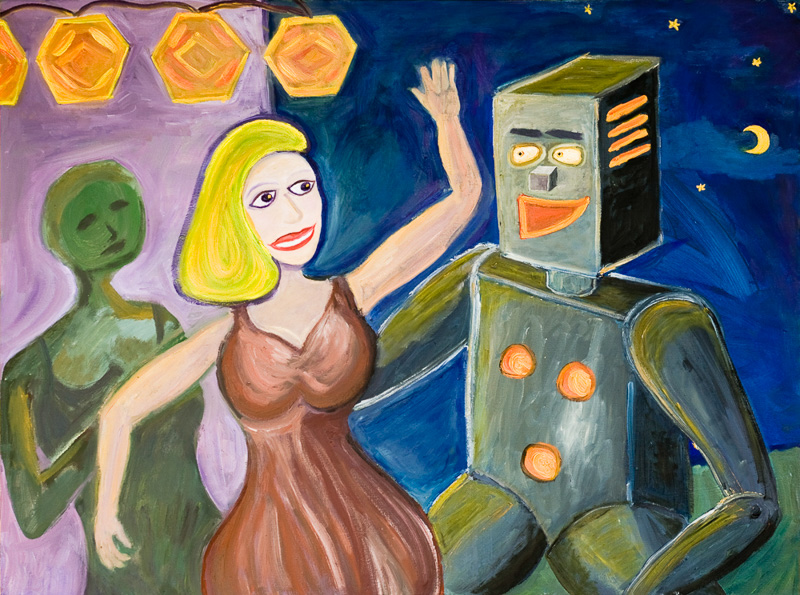
Software → People.
- Bots, that is, intelligent programs, emulate people, taking over some of our jobs.
- AI used to seem unattainable. But for many tasks we can beat the problem to death by training neural nets on big data sets.
- We don’t program high-level AI. Logicians have proved we can never understand AI at our level. But we can evolve human-level AI. It’s an odd win.
- That is, we can emulate our minds without ever knowing how the minds work. All it takes is big data, big crunch, and time.

People → Software.
- As a way of keeping pace, people enhance or augment themselves with the smart agents in their devices.
- The ultimate move will be digital immortality, that is, making a lasting software model of yourself. I call this kind of model a lifebox, and I wrote about it in my tome, The Lifebox, the Seashell, and the Soul. I’ll discuss lifeboxes in my workshop presentation.

Software ↔ Reality.
- Our daily world is saturated with the internet. Like damp sand at the edge of the sea. Both solid and liquid.
- Face to face conversations are increasingly replaced by messaging, video, and social.
- Stores close and move into the cloud. We shop online.
- We use VR to emulate the world, for entertainment, for training, and for predictions.
Cryptocurrency, blockchain, and smart contracts are definitely cyber. Physical money tokens become patterns in the cloud. Signed agreements are in a database. In a smart contract, it may be that some of the participants are bots. A lawyer bot, an agent bot, and a collection bot. I think of the bots as remoras attached to a shark. The contract is the shark.
Punk
Computers aren’t everything. Behaving like a robot is unpleasant. It’s more fun to be human.

The VR worlds of videogames are too clean. Even their scuff marks are clean. As Bruce Sterling once said, “We cyberpunks need to get in there with our spray cans.”
The physical world is grungy and gnarly. Wherever I am, I always look for the chaos, the natural gnarl, and when I find it I feel safer.
Punk is about turning your back on conventional top-down rules. Cyberpunk film and literature breaks free of the boring old plastic, white-bread visions of the future. And folding in more of our actual, daily world.

Punk is for countercultural, decentralized politics. Like, “You’re not my boss. I’m not listening. I’m doing it my way.” In a nutshell?
Punk means give the finger and walk away.
Cryptocurrency, blockchain, and distributed information systems have a definite quality of punk. Many in these areas have a libertarian bent, a wish to be invisible to the government, to maintain privacy, and to evade central control. A good fit for punk. Don’t get permission, just do it.
Internet Goodies
The internet turned out much better than anyone could have hoped. It grew and spread before business or the government could shackle it. The people who designed and released the internet—they were cyberpunks. I’m not saying they were hipsters, no, they were geeks. But they were cyberpunk geeks.
They released the internet into the wild. Hoping for these goodies.
- Deal. Buy and sell online.
- Publish. Post what you like. Others can find your content.
- Search. World library in your pocket. Search it all. Nobody watches.
- Talk. Unsupervised messaging, talk, video.
- Archive. Stash your data in the cloud.
But…

Warning to internet users: “Beware the beak!”
The browser makers, the social networks, the online merchants, and national security—they want to co-opt your goodies. They want to maintain silos of data about you, mostly so they can pelt you with ads.
Even in a democracy, you don’t automatically keep your rights to freedom and privacy. You have to win back these rights, over and over and over again. If you stop being a rebel, they make you a slave.
We need a recalcitrant cyberpunk attitude. Give the finger and walk away? Well, sure. But how?
Three Cyberpunk Use Cases
I’m going to hit you with three out-there cyberpunk SF scenarios. I’ll relate them to Search, Talk, and Archive.
| Enhanced Goodies | Drawback | Old Fix | New Fix |
| (Search) Crystal Ball |
Ads, Data Mining | Ad-blockers, VPN | Everyone has a Search Engine |
| (Talk) Telepathy |
Spam, Eavesdropping |
Crypto, Filters | Recognition |
| (Archive) Immortality |
Impersonation, Spies | Crypto, ID | Memory thread |
Crystal Ball
A commercial search engine tracks you and serves up ads. Conceivably the search engine tells some authority about nasty searches. Yes, you can use ad-blockers and use a VPN to be somewhat anonymous. But even without knowing anything about you, the search engine can skew the hits it offers you. Typically skewing the hits in favor of whatever advertisers or political factions have gotten to the search engine company.
And conversely, your publishing efforts will be unsuccessful if the owners of the global search engines choose not to serve links to your content.
The solution is radical, but simple. Run your own search engine. But, wait, a search engine company is constantly crawling the web, story data in banks of computers worldwide, and curating their data with massive AI.

Ever heard of Moore’s Law? It’s not unreasonable to suppose that in ten or twenty years you’ll have a decent global search machine running on its own in your pocket. Maybe it won’t even be a chip. Maybe we’ll have gone to quantum computing by then and your search machine will be…a tiny “crystal ball.” A little supercomputer, either way.
You’ll automatically enrich your crystal ball’s history as you surf the web. It’ll run off down the branches coming off the places you go. It’ll be an expert on things you interested in.
And—the indie DIY punk aspect—you’ll share your crystal ball’s data peer to peer. But only with trusted parties. In a way it’ll be like Wikipedia. Trusted users building an encyclopedia. There could be a blockchain element akin to the Wikipedia edit tracker.
Telepathy
People are not going to be pecking at tiny smart phone keyboards in ten or twenty years. Already voice typing is close to being usable. But it’s a little embarrassing to be talking out loud to your phone, especially when the person next to you yells, “What?” and that goes into your message. And in the other direction, it’s slow to have to listen to a computer voice. And half the time screen fonts are too small to read.
We want to go beyond kludgy. haptic interfaces like keys, screen. touch, and voice. What you need what I call an “uvvy” patch to put on the back of your neck. A soft piezoplastic slug. It communicates directly with the net. It’s like a cell phone that’s glued onto your body. And—big add-on to the specs—an uvvy can read your brainwaves. Transform your thoughts into images and text. and of course we want the uvvy to be removable.
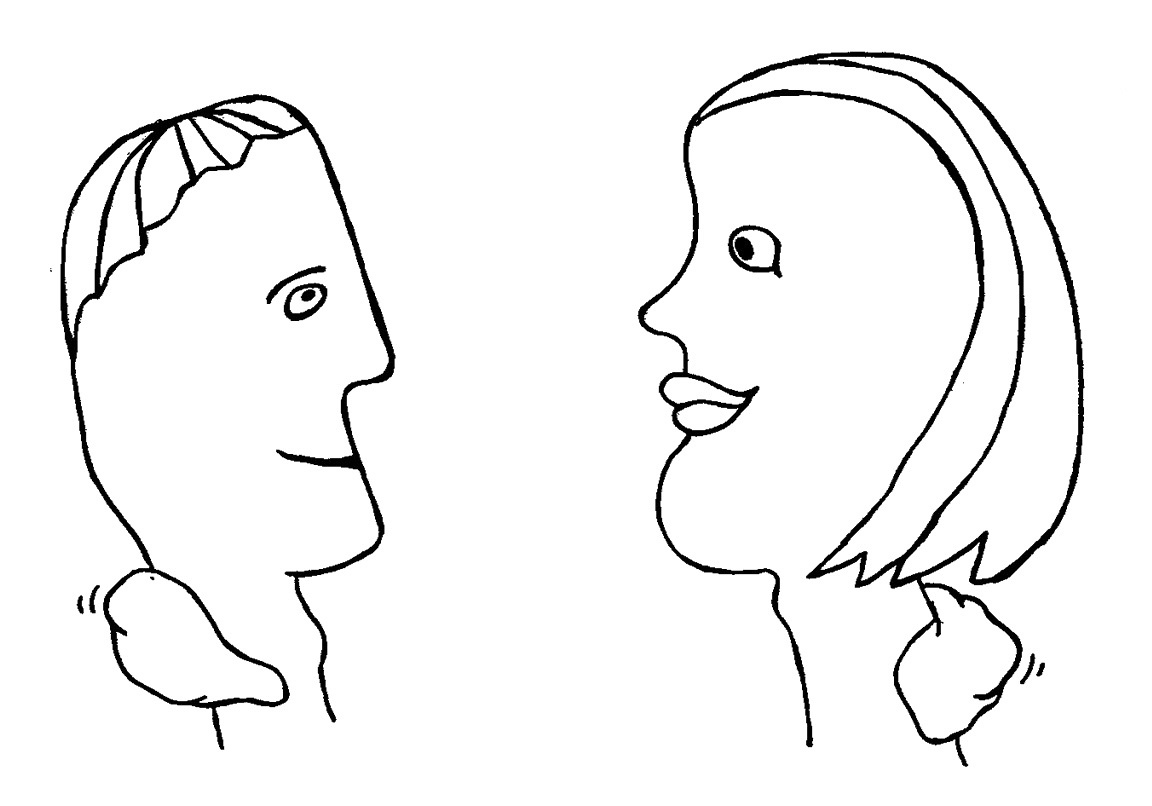
A visitor from the past might take our smart phones for a type of telepathy. But the phone, or the uvvy, just sends pictures and words. For true telepathy we want more than a silent videophone conversation.
- Telepathy involves sharing access to thought patterns in your neurons. Instead of sending information to someone else, you send them a link to the location where that information is stored in your brain. And they can access it there.
- It’s like, you send someone a link to an image on your webpage. Instead of emailing them a JPG image as an attachment.
- It’s like, you send send them a link to a thought pattern in your brain. Instead of sending them a bunch of words about your idea and expecting them to convert your words into a model of your thought. Like I’m trying to do with you right now.
- In two-way telepathy, people might let your brain patterns merge. Super thoughts!

So then comes porno, scams, and spam. Telepathic hucksters will want to overlay your sensations, push into your thoughts, and infect y0ur dreams—should you be foolish enough to fall asleep while wearing your uvvy.
How do we prevent this? Using a central authority is totally out of the question. It’s got to be peer to peer. We might start with a shared key protocol. But the key would have to be unhackable. Something very convoluted.
What if the key is related to the process of recognizing someone. Recognize them in that deep, reliable way that you recognize a life-long friend from their face, voice, conversational style, and overall personality..
Having a given personality is, one might say, a proof of work, in the cryptocurrency sense. A mature personality is, in a sense, a blockchain, with each new state of consciousness containing pointers to previous states.
But what about telepathy with people you don’t know? Unsafe telepathy could be worse than unsafe sex! Maybe we’d want to go for something like letters of introduction. Like, “Rudy sent me.”
Digital Immorality
So how about making a software model of a person? So that, like, you can get a beloved partner back? In the near term, we already have a simple way for mimicking this process, something that I call lifebox software. I’ve been writing about it for years. It hasn’t caught on in a big way, but I think it will. I’m going to talk about it in my workshop session later today.

But maybe being perserved as something like a website isn’t enough?
But, wait! How about actual immortality? Let’s suppose that a more futuristic lifebox is supported by a funky and extremely powerful device. Perhaps the support platform is bio-computational, or perhaps it’s a quantum computer. And let’s say that the lifebox has that elusive sense of “watching itself watch itself” that seems to characterize conscious thought.
Here we’d have an impersonation issue. It seems like I’d prefer to have just one posthumous lifebox ghost—and not a slew of Elvis-imitator-type poseurs mixing in with my estate, my work, and my surviving family.
But what about copies that are reasonably close. As with telepathy, there’s the “recognition” factor. Your thread of consciousness is a kind of blockchain. The richness of memories are, in their own way, a proof of work. It’s a block chain thing as the references are subtle. The thread of consciousness is a block chain. A non-hacked, non-forged. authentic record of my thoughts.
.jpg)
Preserve your software, the rest is meat?
That’s true, up to a point, but don’t forget—where there’s filth, there’s life!
In the long run, natural computations are where it’s at. And by natural computation I mean a whole range of possiblities, including the functioning of an organism, the mass movements of a society, the thoughts in your mind, and even the quantum tingling inside a rock.
Links
For more info about these topics, check out my workshop talk, “Lifebox for Telepathy and Immortality.”
And visit the links on my home page, www.rudyrucker.com